This ghostly character is something you don’t see every day, certainly not in Toronto. With its fleshy, pale appearance those who see it can mistake it for a mushroom. It isn’t. Instead it’s the chlorophyl-free parasitic plant called variously indian pipe, ghost pipe or ghost plant, and corpse flower (Monotropa uniflora).
I came across it while camping at Awenda Provincial Park near Midland on Georgian Bay. The forest floor is thick with fallen leaves, giving woodland wildflowers the humus-rich environment they need. But these ones aren’t feeding on that rich soil. They get their food by stealing it from other plants. [Excuse me: I’ll have to publish to meet my deadline then come back to tell the rest of the story in a minute.]

Ghost pipe falls into a sub-category of het
erotrophic, meaning parasitic or other-feeding, plants called mycotrophic plants (the US Forestry Service has a great fact sheet). It means that they feed on or more properly off fungi – tapping i
nto the fine fungal threads called mycorrhizae. And in this case the mycorrhizae themselves are forming mutualistic, give-take relationships with plant roots. They get sugars from the photosynthesizing plants in exchange for things like minerals. The ghost pipes just tag along for the free lunch.

For more info on ghost pipe, you can also visit this page from the US Forestry Service, as well as the always informative Ontario Wildflowers website by Walter Muma.
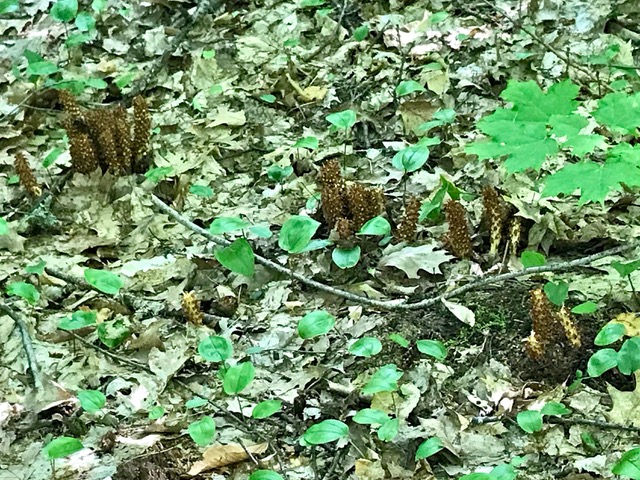
Once we noticed our first ghost pipe, we could spot them all over. Then, we began to notice another s
trange plant we couldn’t identify. The park gave us little or no access to the internet – one of the reasons to go camping, in my opinion. But Google and I soon sussed it out once I got home.
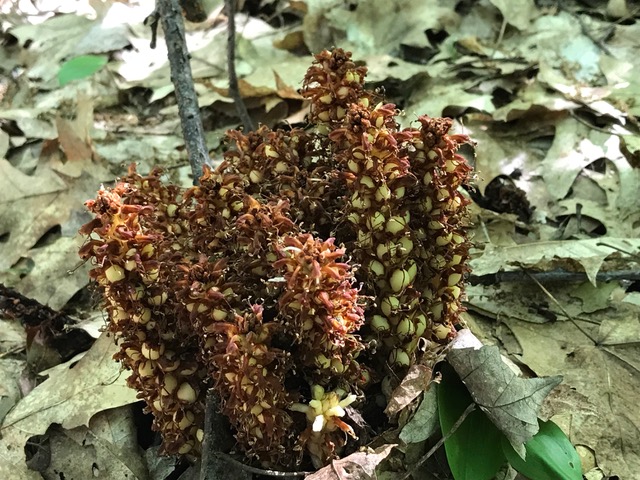
Turns out, it was another parasite with a series of common names, the most polite being bear corn (Conopholis americana). But this plant has a very specific host or hosts. For its food, it taps direc
tly into the roots of oak and beech trees. Notice the carpet of oak leaves?
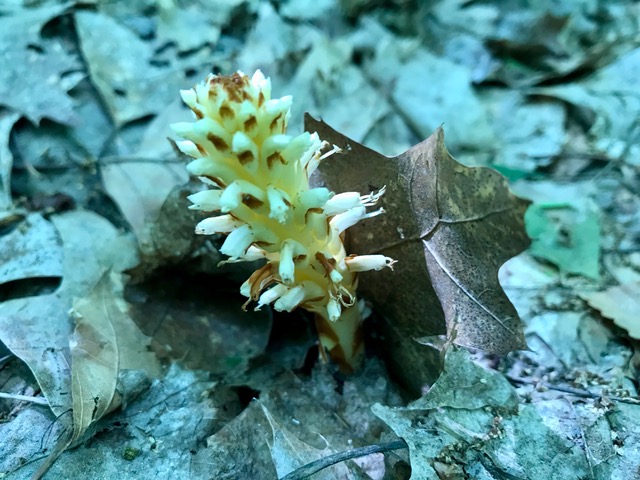
Again, I turn to Walter Muma’s website for further info on this unusual native plant. Not only does it have no chlorophyll, it has no leaves!
Thanks to the specific growing conditions for each of these plants, they aren’t the kind of wildflowers we can grow in our gardens. They remain a curiosity, and part of the vast creative possibilities of nature. If you ever meet one, tread carefully and take nothing but pictures.
Are these plants you’ve met before?

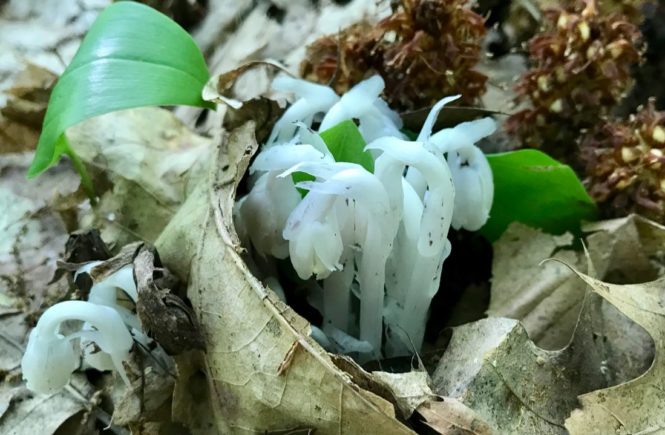


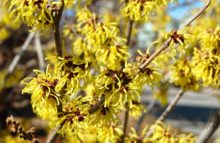
10 comments
Wow. These are so cool. I never get to see them except in photos so appreciate your post a lot!
Gail, I don’t think I’d ever seen them before except in pictures, either. I *was* obsessing about them a little while we were camping. Thankfully, my friends are used to me and like me anyway.
Fascinating, Helen. We have lots of Indian pipe in the woods but I’ve never spotted bear’s corn. Now I’ll be on the look-out for it.
With your extensive woodlands, I’m not surprised about the ghost pipe, Pat. But how are you for oaks and beeches? That’s the key to finding the other.
Cool finds. Those fascinating small plants are a good reason to look closely while out on a walk.
Agreed! My eyes are always on the lookout for unusual plants.
Very cool find ! I have heard of Indian Pipe before but hadn’t seen a lot of pictures of them .. it is amazing to know they exist in such opposite conditions as the plants in our gardens .. but it defines the tenacity of mother nature to create, no matter the circumstances right ? .. great post !
So right, Joy. Nice to see you here.
Bizarre and a little creepy, but fascinating. I have seen the Indian Pipe only a couple of times in the wild.
Yes, they are. I love that about them.